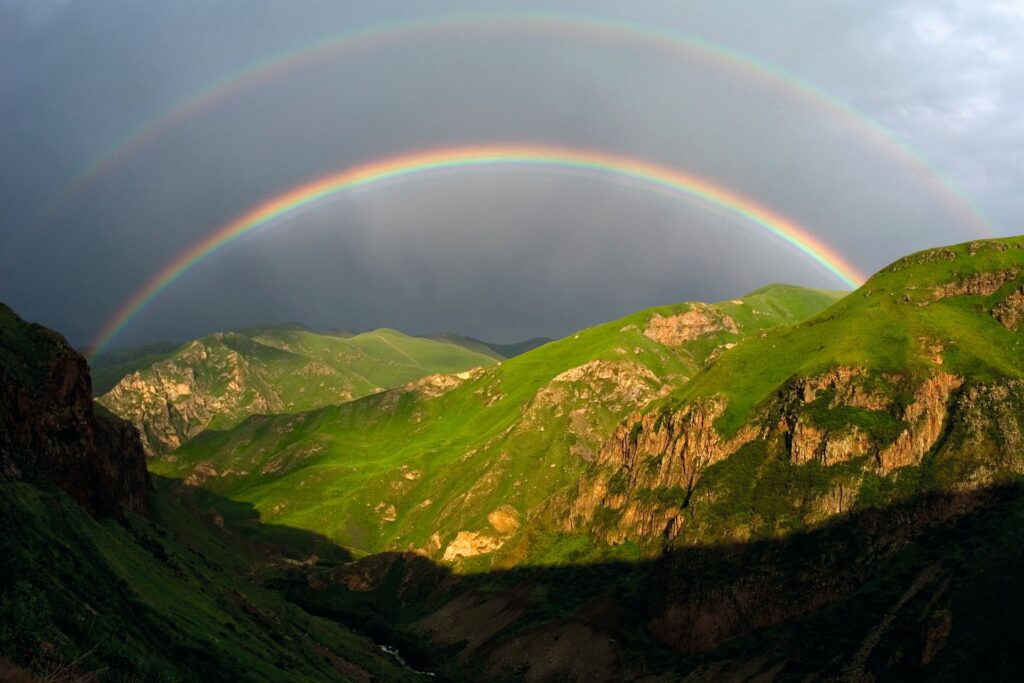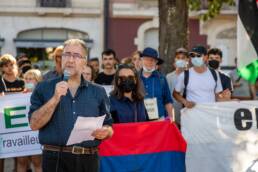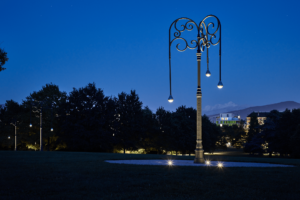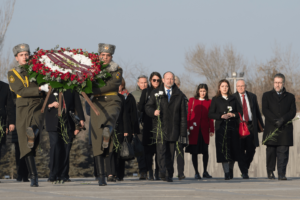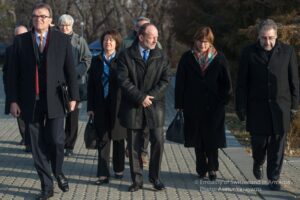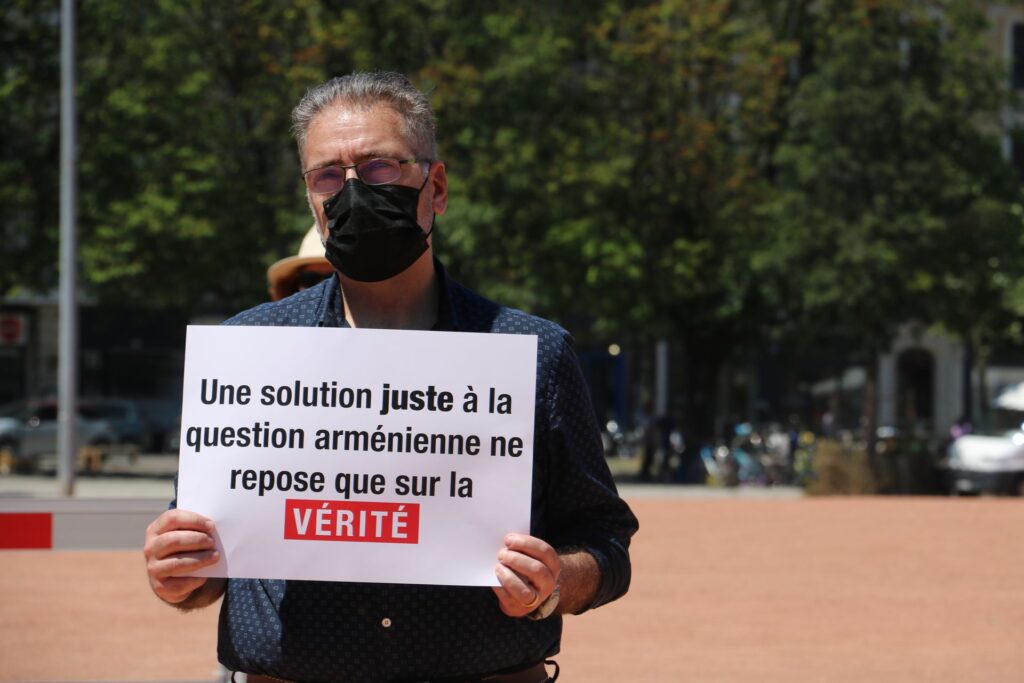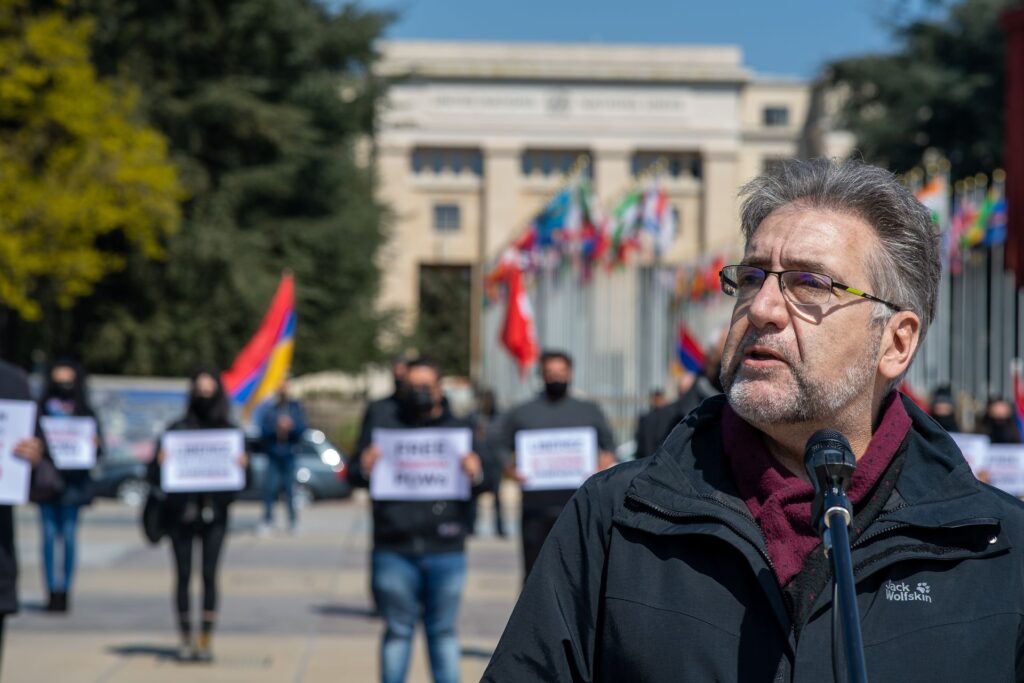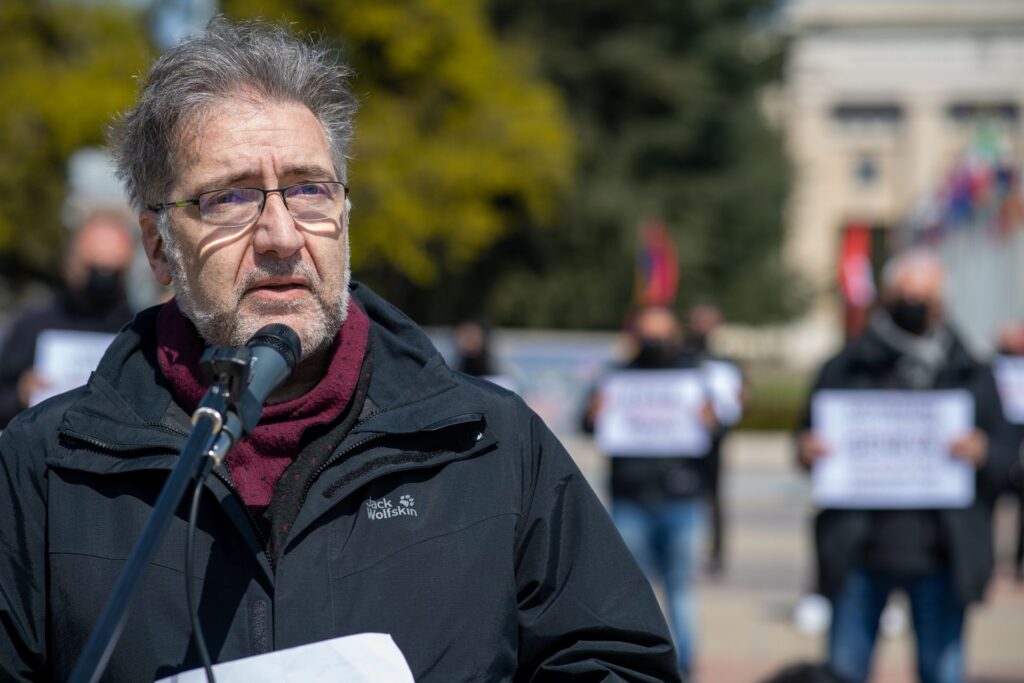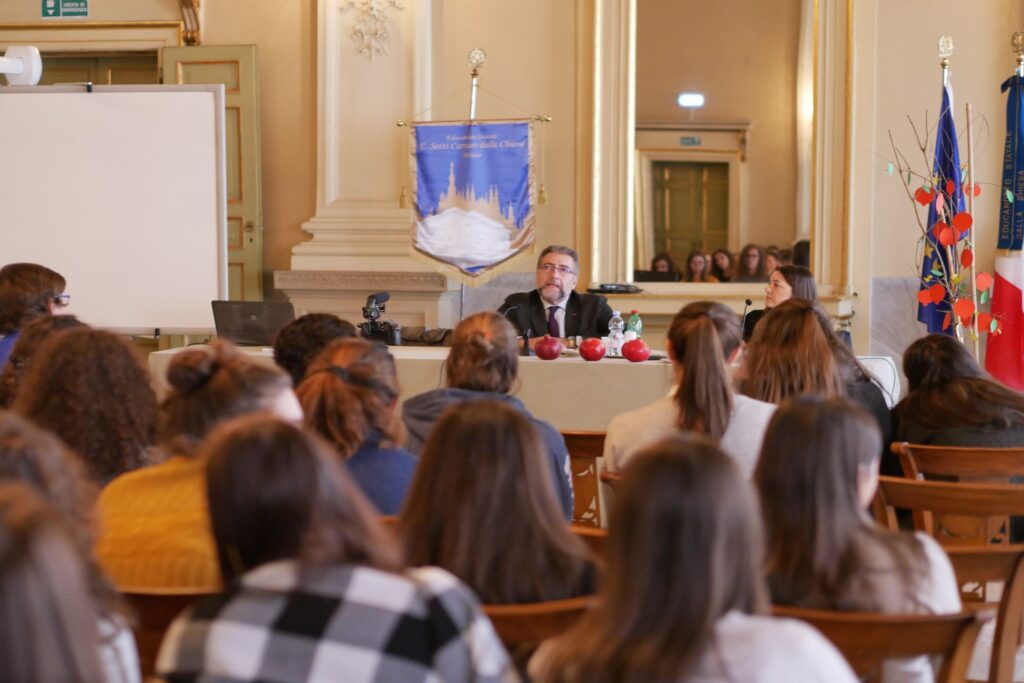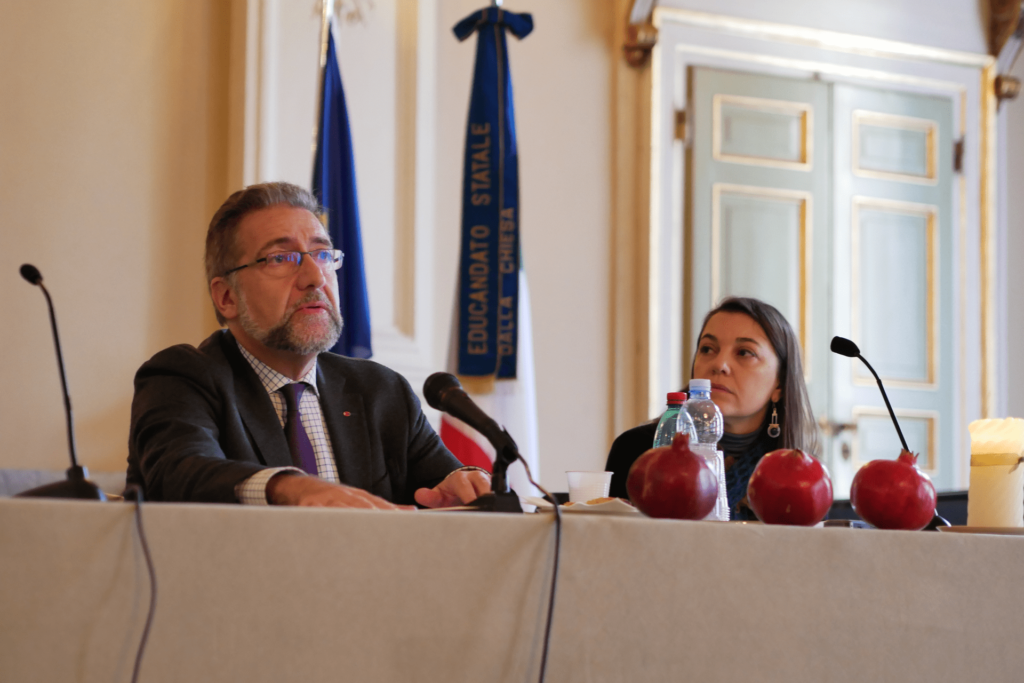Sarkis Shahinian: “Azerbaijani government releases Armenian inmates”
Secretary General of Switzerland-Armenia Parliamentary Group talks about detainees in defiance of UN law and war secrets in Artsakh
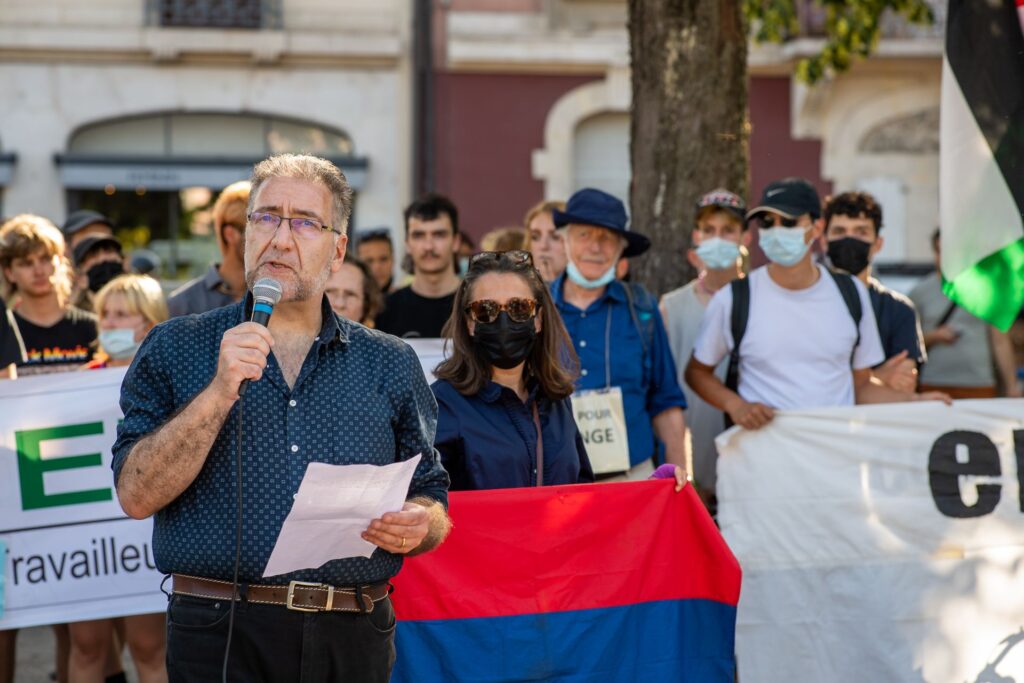
The Nagorno Karabakh war is close to us: it took place between September 27 and November 10, 2020, and the Caucasus, geographically and culturally, is not so far away from Switzerland. The war clash between Armenians and Azerbaijanis, which in reality cannot yet be said to be completely over, has left behind officially more than seven thousand dead on both sides, some of whom, as you can see in some videos, were literally wiped out by the Azerbaijani side with bulldozers.
Currently, there are still over 30 Armenian prisoners of war illegally held in Azerbaijan. The International Red Cross is aware of this fact which is contrary to international humanitarian law, but Azerbaijan refuses to release them until the Armenians surrender portions of territory claimed by both sides.
Switzerland will have an ad hoc ambassador for the… science
The Republic of Artsakh (the Armenian name given to this region since ancient times), buffer between Armenia and Azerbaijan, is a nation that, with difficulty, after centuries of domination, tyranny and ethnic persecution has finally managed, in 1991, to form and establish itself as a state, but its legitimacy at the international level has been recognized only by three countries (not belonging to the UN).
Therefore, in spite of the millenary history of Armenians living in this region, witnessed by dozens and dozens of archaeological sites, churches, buildings and even rock engravings, the Republic of Artsakh is not yet legitimized at the international level.
Lisa Mazzone, States Councilor; Alain de Kalbermatten, head of the fraction of Christian-Democratic Party at the Geneva Municipal Council, Arnaud Moreillon, member of the Geneva Municipal Council from the Socialist Party, Sarkis Shahinian, of the Switzerland-Armenia Association pic.twitter.com/sjp25FdOJz
— Tamar Iminhokis (@iminhokis) July 28, 2020
Consequently, talking about the war in Artsakh, which is not recognized by the UN (the United Nations does not “certify” its independence, but recognizes the existence of an indigenous Armenian entity within this territory, which, however, recognizes it as an integral part of Azerbaijan, as does Switzerland), is difficult for those who do not know the situation directly and are not familiar with the Armenian population.
Several regions of the world have, in recent years, acquired sensitivity towards this people who have been struggling to establish themselves as a state. Since 2012 some official acknowledgements have started to arrive from federated states and minor territorial entities such as, for example, the Lombardy Region, which in November 2020 recognized the Republic of Artsakh as an independent state. Switzerland, by virtue of its neutrality, could dare to be the forerunner in recognizing at an international level this small sovereign nation that has been fighting for its autonomy for centuries, just as it did in the case of Kosovo.
Ignazio Cassis at the Council of Europe for digital rights
The conflict between Azerbaijanis and Armenians is, above all, an ethnic issue and cannot be trivialized by talking about a clash between Christians (Armenians) and Muslims (Azerbaijanis) since religion has been degraded to a mere pretext for war.
In this interview with Sarkis Shahinian, Secretary General of the Switzerland-Armenia Parliamentary Group, we try to contextualize the conflict, understand its local consequences and, finally, denounce the fact that in a country belonging to the Council of Europe there are still, at present, Armenian prisoners of war held in Azerbaijan, violating the tripartite agreement sanctioned on November 9, 2020 and offending international humanitarian law.
The inhumanity of early revolutionaries germ of catastrophes
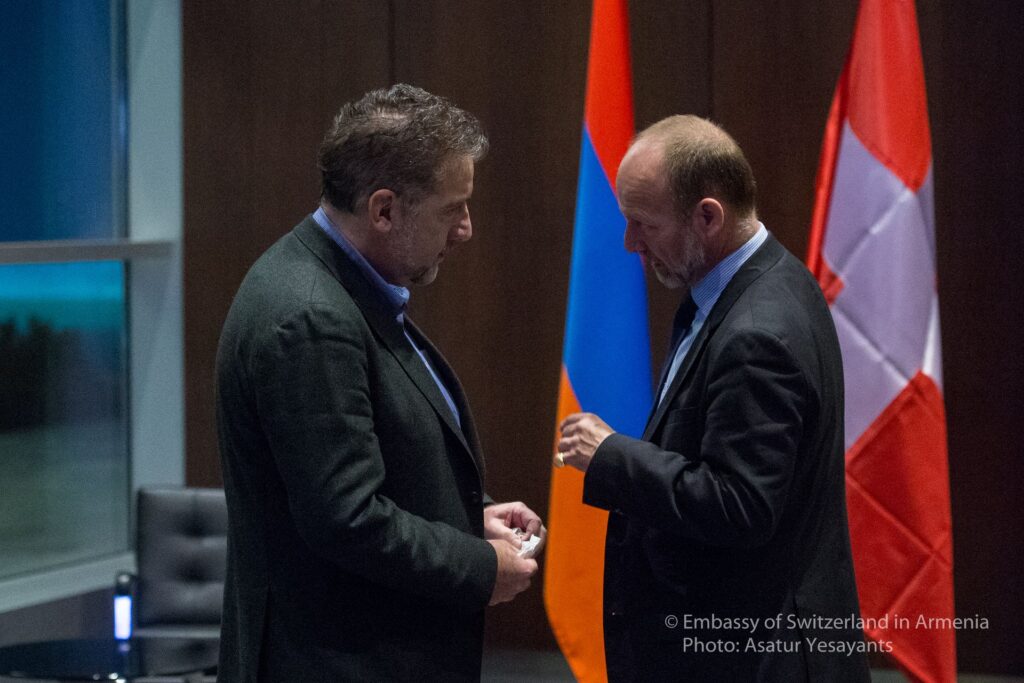
First of all let’s try to understand the motive of the conflict, still ongoing, between the Karabakh State (inhabited by native Armenians), which wants to be independent and recognized, and Azerbaijan, which would like to take those territories. Is it a religious, border or oil-related issue?
“The motive of the war is very difficult to summarize, as it touches on several issues and, above all, is strongly focused on the ethnic issue even more than on the religious one. The control of Armenian territory is, for Turkey as for Azerbaijan, an important strategic issue. This is why Turkey has done so much to help Azerbaijanis. Certainly the search for raw materials has a significant value: the territory of Karabakh, in fact, is rich, for example, in gold mines, as well as water and timber. The core of the conflict, however, is to be found more in the political than economic sphere: it is for centuries that the Ottoman Empire, first, and modern Turkey, then, have aims panturche (panturchismo is the ideology that aims at the territorial reunification of all peoples of Turkish stock, from Constantinople to Altaï, creating a single political entity, military and, in part, religious, ed) and the fact that there are areas of resistance to their project, in this case the Armenians, bothers them. In addition, there is also the ethnic plane that, among people, has great relevance and is the one, among civilians, most felt. The topic of oil is certainly topical: SOCAR, the state-owned oil and gas company of Azerbaijan with about 100,000 employees, creates 75 percent of its turnover in Switzerland, thus financing the Azerbaijanis’ war against the Armenians. It is because of the oil-related economic ties with Azerbaijan that Switzerland speaks little about this conflict.”
Switzerland’s bilateral meetings with the USA and Russia
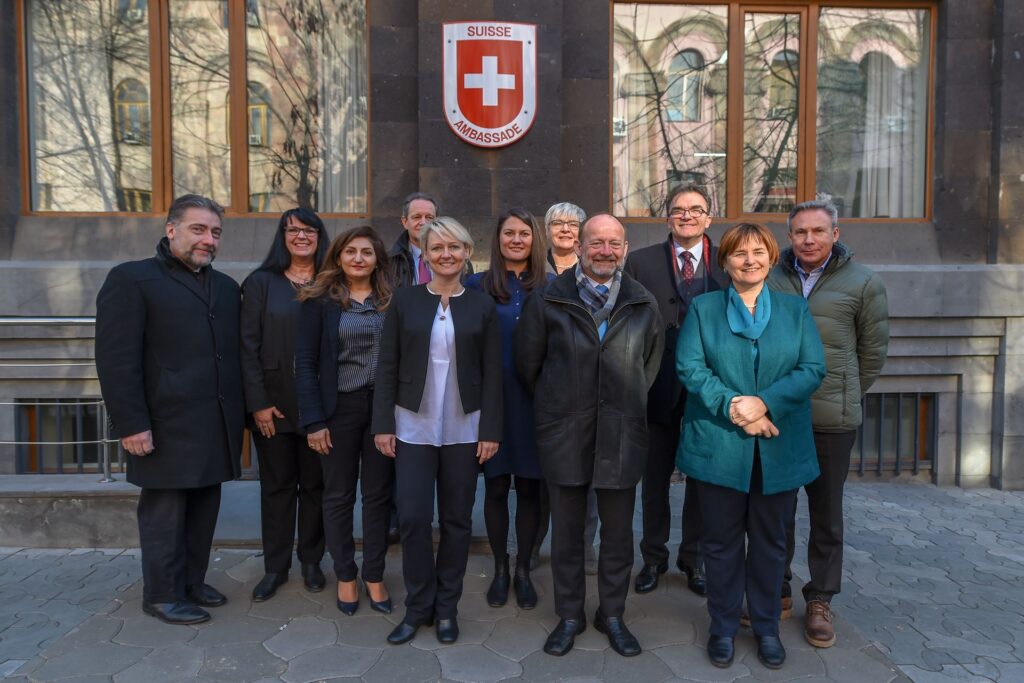
According to some intelligence sources, some ISIS militiamen also took part in the war against Armenia. Is this true?
“This news is now no longer secret: even the French President, Emmanuel Macron, said that in the 2020 Karabakh war some terrible attacks on the civilian population were perpetrated by ISIS militiamen. About 2 thousand Syrian Islamic fundamentalists, tracked via GPS by the French services, went to Karabakh to fight the infidels by posting on Instagram videos of terrible summary executions and torture (In one video you can see an Armenian prisoner kneeling and begging for mercy: he has eye sockets without eyes, ed.). In these cases, however, it is important to emphasize that the religious issue is only a pretext with which to foment war. Religion is instrumental, as during the genocide of 1915. Religion was only a means with which to incite the population of Azerbaijan against the Armenians, feeding religious and racial hatred”.
Switzerland and the Holy See: a century of diplomatic relations
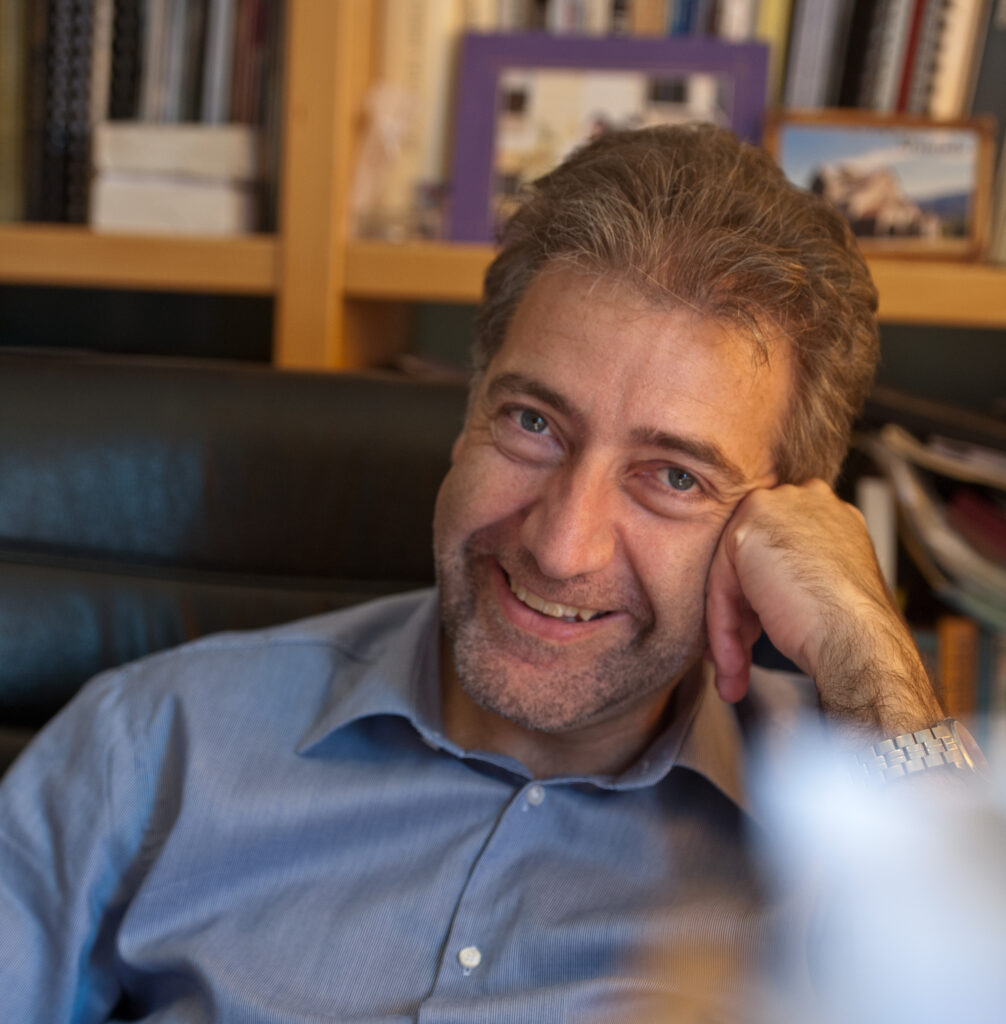
Amnesty International has documented the use of white phosphorus, which corrodes people and obliterates forests, as well as cluster bombs. Tell us about it.
“Azerbaijan used a lot of weapons of mass destruction during the war. It was a real massacre. It must be said that both sides used such weapons. However, the Azerbaijani phosphorus bombs did impressive damage to people and forests. Kilometers and square kilometers of Armenian forests have been devastated, in addition to targeted attacks on civilian populations, hospitals (the maternity hospital of Stepanakert, capital of Artsakh, and Marduni) and places of historical importance, such as churches. In this war many young civilians lost their lives (unfortunately, Armenian vestiges, such as archaeological sites, necropolis, khatchkars, i.e. stone cross steles, churches, monasteries are not under UNESCO protection; however, there is an important nuance, since UNESCO itself, some years ago, included Armenian khatchkars in the intangible cultural heritage of humanity without specifying their location, considering the fact that they are scattered all over the territory of historical Armenia, ed.)
Who provided armaments and support to the Azerbaijani army?
“Turkey took over the entire organization of Azerbaijan’s army. The Turks, prior to the September 27 attack, transferred an impressive amount of armaments, especially planes and drones, as well as trainers to the Ghianja region. Israel has provided high-tech drones to the Azeri. The intent is to reinforce an alliance with Baku and contributed, after the end of the war, to the construction of the Fisulì airport to control Iran. Moreover, this war was also supported with the direct intervention of Pakistan’s army. Pakistan is a nuclear power, and it is still the only country that has not recognized Armenia’s independence.”
“More science in diplomacy, more diplomacy in science”
What can be said about this conflict, unknown to most?
“The Fall 2020 war was not officially launched against Armenia, but against the Armenians of Karabakh. The attacks on Armenian territory, for example, the shooting down of an Armenian military aircraft in the skies of Vardenis by a Turkish F-16 lifted into the air from the military base in Gyandza, as well as the attack of some military bases in Armenia with Israeli drones, had only strategic value. However, after the signing of the joint declaration of armistice on November 9, 2020, Azerbaijan attacked the Armenian border on several occasions, especially from May 12, 2021: there yes to reduce the Armenian territorial entity, an issue currently under consideration by a tripartite commission (Armenia, Azerbaijan and Russia) in charge of defining the delimitation and demarcation between the two states.”
Why did Vladimir Putin have to intervene to stop the war on November 10, 2020?
“The war between Azeris and Armenians is not over: suffice it to say that there are still several dozen Armenian prisoners of war illegally held in Azerbaijan waiting to be released. Azerbaijanis use them as a bargaining chip in order to barter them with the Armenian consent to create a special status transit corridor, not controlled by Armenia, connecting Nakhitchevan (the Azerbaijani enclave between Turkey, Armenia and Iran) and the rest of Azerbaijan, a point that Baku introduced after the signing of the armistice on November 9, 2020, in which there was only talk of opening the communication routes between the two countries, without talking about special status corridors. Moreover, the Azeris, as has been documented, have recently carried out several incursions on Armenian territory: on May 12, they occupied large sections of the highway connecting the city of Goris with the city of Gapan, on July 13, 2021 they fired drones near the Armenian gold mine in Sotk, etc. To return to your question, during the war there were three ‘ceasefire’ agreements, and violated immediately in the first two cases by Azerbaijan in order to acquire territorial dividends as quickly as possible and using the weapon of terror, continuing to massacre civilians. As a result, President Putin intervened before the situation degenerated completely, but only when the Armenians no longer had any chance to defend the territorial integrity of Artsakh. Hadrut and Shushì had already fallen into Azerbaijani hands.”
“In 10 years’ time the risk of no Jewish life in Europe”
Ben-Dror Yemini: “Lies are the measure of anti-Zionism”
Lamberto Giannini: “Italy? On anti-Semitism is vigilant!”
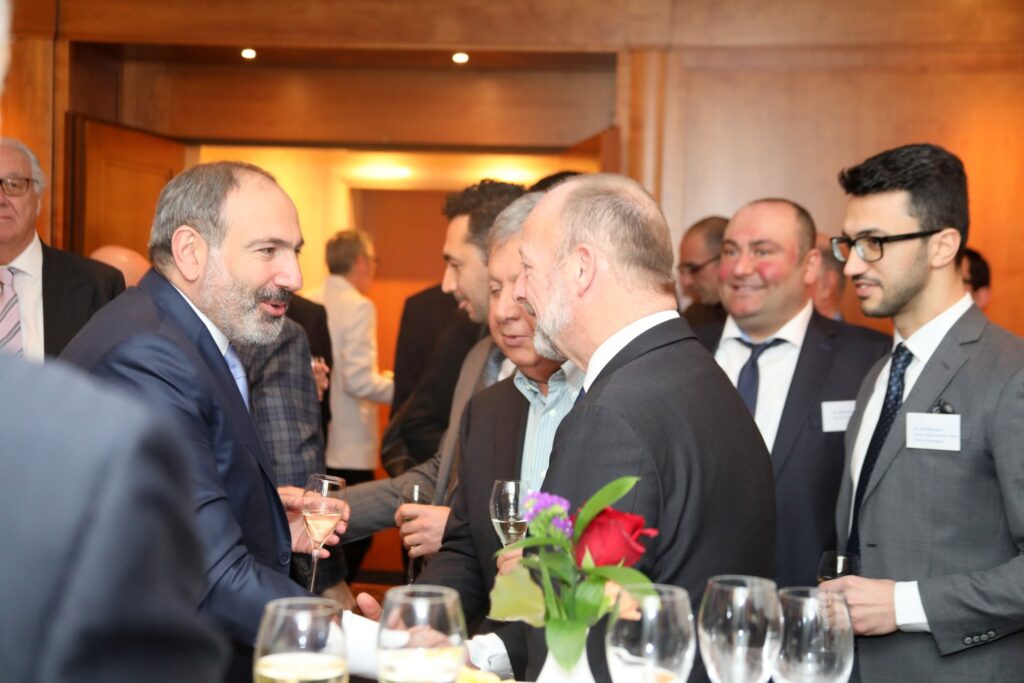
What is the war trophy park?
“The war trophies park is a sort of gloomy wax museum and a place of exhibition of war material confiscated from Armenians during the conflict, where Azerbaijanis celebrate their ethnic hatred towards Armenians. There are, for example, displayed and hung the helmets of Armenians who died in the war: it is a place that makes you shudder, and thanks to the intervention of some humanitarian organizations, but especially on the eve of the decision of the International Court of Justice in The Hague, the worst and most degrading exposures against the human race have been removed. There are wax dummies emulating dying Armenian soldiers, against whom Azerbaijani children are invited to rail and shout insults. This war trophy park is an expression of the clearest desire to extend and spread racial hatred against the Armenian people, aimed at their total annihilation.”
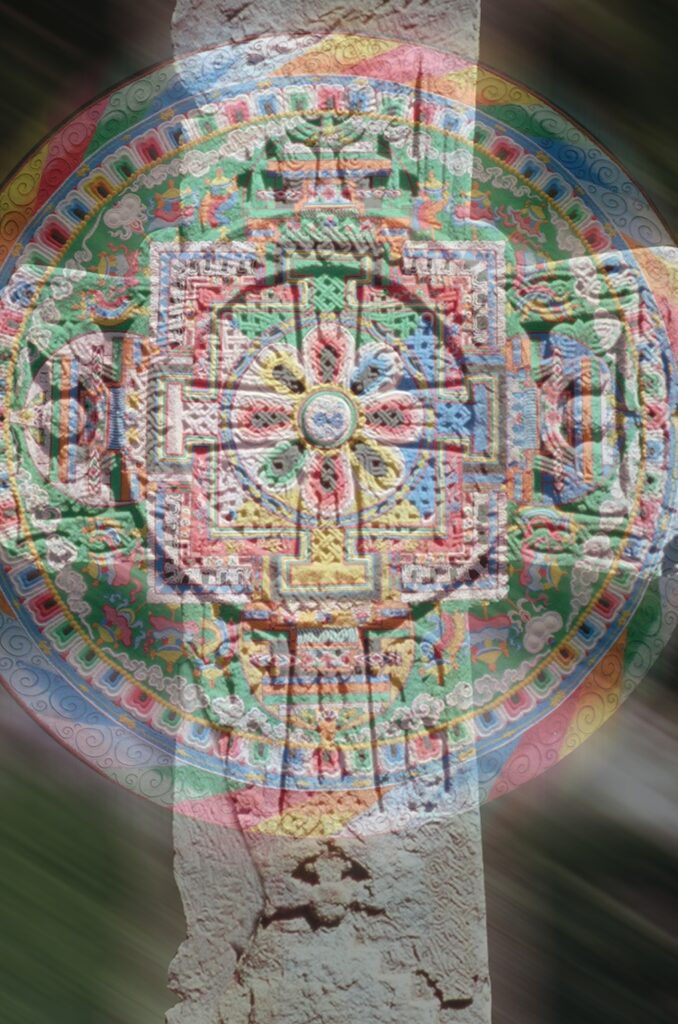
What are your dreams and hopes related to Armenia’s future?
“Peace and prosperity, and this for all the peoples of the region. But winning peace has always been a difficult task, much more than launching a war. On both sides there are many victims. Don’t believe it: Azerbaijan has also registered an impressive amount of victims, most probably twice as many as on the Armenian side, but it doesn’t talk about it, because this would not honor the Aliyev family and its strategy. But the result of this as well as other wars around the world is the disappearance of an entire generation and the ruin of complete families, who saw in their young sons the only source of sustenance and survival in a society increasingly constituted on a ruthless competition. For that we need, on both sides, to create a society stripped of any kind of racial hatred. As for Armenians, my dreams are many and differentiated. First of all, the re-establishment of a true national security, based not on the myth of invincibility, but on the true ability to create the tools that prevent the dismemberment of the territory. Then, the re-establishment of a political, economic and social system capable of creating sustainable development, based on a system of education and cultural re-appropriation that does not slavishly re-propose values of the past without contextualizing them in the present and, even more, in the future, but is able to anticipate events and build a society that is actually strong and balanced. For all this an efficient and, therefore, highly competent political class is necessary. But right now Armenia is not experiencing this kind of reality and Armenia’s political elite does not seem to have well understood these challenges. From diplomacy to economics (especially the development of cutting-edge technologies, densification and productivity of agriculture, as well as the development of renewable energy sources), clearly not forgetting the defense and intelligence system, Armenia faces challenges laid bare by this war that has at least had the merit of bringing us back down to earth. My personal hope (which, however, also represents that of many Armenians scattered in 87 countries around the world) is to see the Armenian diaspora regain its role of maintaining and spreading its cultural and linguistic values, but also to support with all its might the interests of these two small territories of historical Armenia – the Republic of Armenia and the Republic of Artsakh – still inhabited by Armenians in order to strengthen them and prevent them from being emptied by the exasperation of those who remained. But for it to be in a position to do so, the Diaspora must question certain of its atavistic values and orient itself towards the future, behaving intelligently and constructively. In this sense, I hope that the international recognition of the Armenian genocide will not be seen only as a symbolic act, but will be understood in its true political and strategic essence, by all the components of the Armenian society, in Armenia as well as in the Diaspora. If it is true that the Mèdz Yeghérn (Armenian idiomatic expression to define the genocide of 1915, ed.) is an integral part of the identity of every single Armenian, we must be able to transform it into a position of strength, stripping it of any possible self-pity and preventing it from destroying us inwardly, paradoxically helping those who want to diminish the resilience of our people”.
Ignazio Cassis: “Switzerland in my heart, the world as a home”
